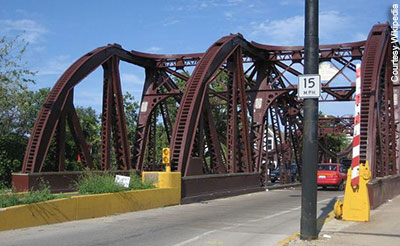Reference




OpenAI's Answer
The Cortland Street Drawbridge, originally known as the Clybourn Place Drawbridge, is a significant piece of engineering history in Chicago. Opened in 1902, it was the first trunnion bascule bridge constructed in the United States. This type of bridge was a major advancement in movable bridge design, specifically tailored for the city's unique waterways.
Key points regarding its significance include:
-
Innovative Engineering: The Cortland Street Drawbridge set the standard for movable bridges in Chicago and became a model for 53 of the 54 movable bridges in the city. Its design featured electric motors for operation, a pioneering aspect at the time (source).
-
Landmark Status: It was designated a Chicago Landmark on July 24, 1991, acknowledging its historical and architectural importance. The bridge exemplifies the distinctive Chicago-style fixed-trunnion bascule bridge design, which includes a unique shape with three trusses bulging upward at the ends (source).
-
Cultural Impact: Beyond its engineering significance, the bridge represents the innovations of early 20th-century American civil engineering, contributing to the development of urban infrastructure that facilitated transportation and commerce (source).
Images of the Cortland Street Drawbridge can provide a visual representation of its structure and significance:



In summary, the Cortland Street Drawbridge not only serves as a functional structure but also stands as a testament to the innovative spirit of Chicago's engineering history. Its design and construction have shaped the development of movable bridges across the country.